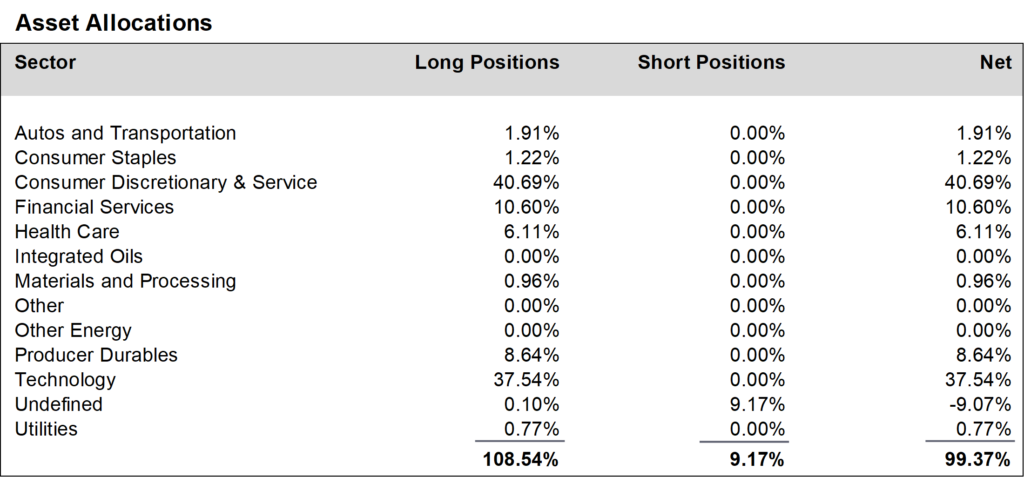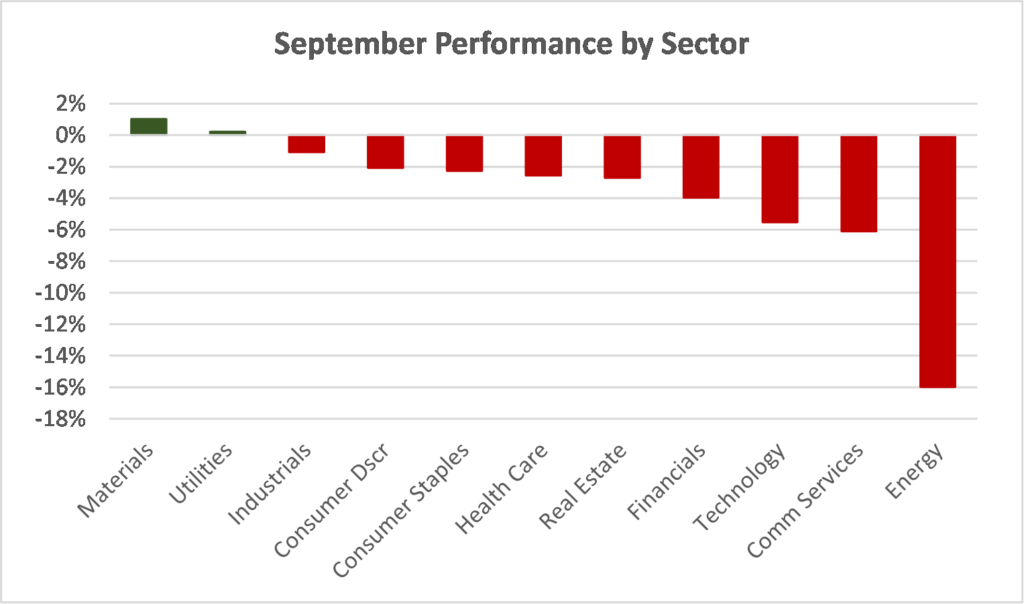
Ocean Park Capital Management
2503 Main Street
Santa Monica, CA 90405
Main: 310.392.7300
Daily Performance Line: 310.281.8577
Stock Indices:
| Dow Jones | 40,669 |
| S&P 500 | 5,569 |
| Nasdaq | 17,446 |
Bond Sector Yields:
| 2 Yr Treasury | 3.60% |
| 10 Yr Treasury | 4.17% |
| 10 Yr Municipal | 3.36% |
| High Yield | 7.69% |
YTD Market Returns:
| Dow Jones | -4.41% |
| S&P 500 | -5.31% |
| Nasdaq | -9.65% |
| MSCI-EAFE | 12.00% |
| MSCI-Europe | 15.70% |
| MSCI-Pacific | 5.80% |
| MSCI-Emg Mkt | 4.40% |
| US Agg Bond | 3.18% |
| US Corp Bond | 2.27% |
| US Gov’t Bond | 3.13% |
Commodity Prices:
| Gold | 3,298 |
| Silver | 32.78 |
| Oil (WTI) | 58.22 |
Currencies:
| Dollar / Euro | 1.13 |
| Dollar / Pound | 1.34 |
| Yen / Dollar | 142.35 |
| Canadian /Dollar | 0.72 |
Portfolio Overview
Ocean Park Investors Fund lost 1.28%* in September. However, we outperformed the major indices, including the S&P 500 which lost 3.92%. In addition, the fund outperformed the HFRI Equity Hedge Index, which lost 1.53%. For the year to date through June, the fund was up 20.15%* while the S&P 500 was up 4.09% and the HFRI was up 2.24%. Several portfolio stocks generated outsized gains, including Zoom Video (up 44%) and Bed Bath and Beyond (up 23%).
During September, we increased positions in the financial services sector and the producer durables sector. Exclusive of our short position in QQQ options, we finished the month at about 99% net long, up from about 97% in August. However, taking into account our QQQ short option hedges, our effective net long exposure was closer to 80%.
Daily updates on our activity are available on our Results Line, at 310-281-8577, and current information is also maintained on our website at www.oceanparkcapital.com. To gain access to the site enter password opcap.
*These results are pro forma. Actual results for most investors will vary. See additional disclosures on page 4. Past performance does not guarantee future results.




